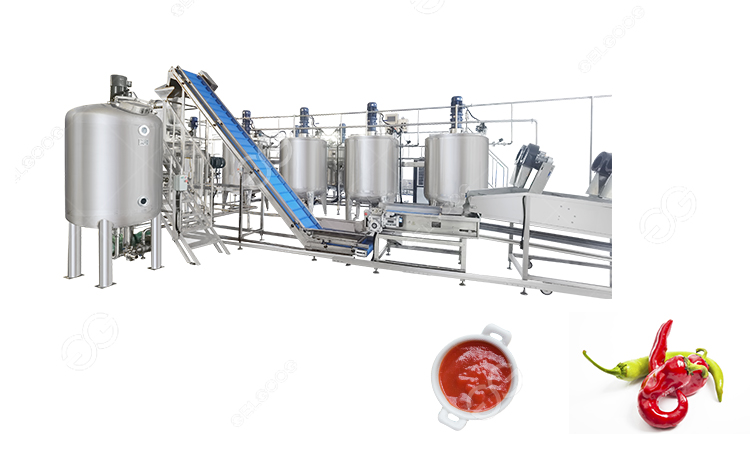Chili sauce is a popular condiment worldwide, and its production process involves several steps, from the selection of raw materials to the packaging of the final product, each step of which requires strict control and management. Below is the hot sauce manufacturing process in a modern factory.

- Procurement and acceptance of chili peppers
The first step in the production of chili sauce is the procurement of high-quality raw materials, mainly including chili peppers, garlic, salt, sugar and vinegar. Factories usually establish long-term relationships with farmers or suppliers to ensure a stable supply and quality of raw materials. Upon receipt of raw materials, strict acceptance procedures, including sensory inspection and testing of physical and chemical indicators, must be carried out to ensure that the raw materials meet the production standards.
- Washing
Accepted chili first need to be cleaned to remove surface soil and impurities. Common washing methods include running water and spray washing.
- Cutting and Crushing
After cleaning, the chili need to be cut and crushed for subsequent processing. Cutting can be done by using an automatic cutter to cut the chili into small pieces. The crushing process uses a pulverizer to break the peppers into a fine chili puree, a process that contributes to the uniformity and texture of the chili sauce.
- Blending and Mixing
Once the chili sauce is prepared, add other side ingredients such as garlic, salt, sugar and vinegar as per the recipe. All the ingredients will be thoroughly mixed in a mixing tank to ensure even seasoning. The mixing process requires constant stirring and maintaining a certain temperature and time for optimal seasoning.
- Sterilization and Filling
Mixed chili sauce needs to be sterilized at high temperatures to ensure product safety and extend shelf life. Common sterilization methods include pasteurization and high temperature instant sterilization. After sterilization, the chili sauce is immediately filled to avoid recontamination. Filling is usually done using an automatic filling machine that pours the chili sauce into cleaned and sterilized bottles or jars.
- Encapsulation and labeling
The bottles of chili sauce after filling need to be processed for sealing, and the common methods include screwing cap, pressing cap and sealing film. After sealing, the bottles will be cooled to stabilize the quality of the chili sauce. Subsequently, the bottles will enter the labeling process, where information such as product labels and production dates are automatically affixed.
The hot sauce manufacturing process involves several steps, each of which requires strict control and management to ensure the safety and quality of the product. Each production process requires specific equipment to complete, if you want to know more about chili sauce production equipment, you can leave us a message.